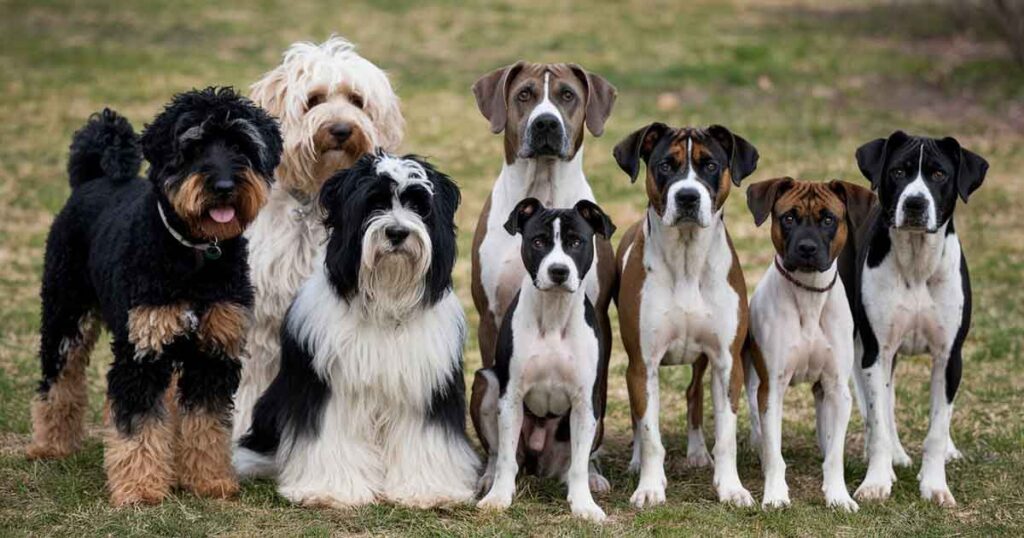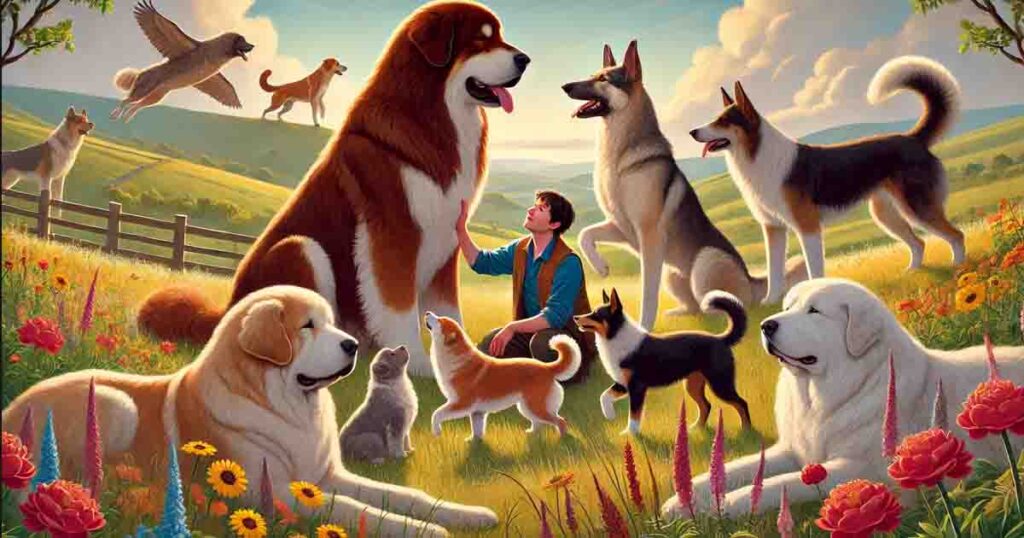Introduction to International Dog Day
Every year on August 26th, dog lovers around the world celebrate International Dog Day. This special day is not just about showering our furry friends with love and treats; it’s also a time to highlight the diversity within the canine kingdom, particularly the world’s most rare and unique dog breeds. While popular breeds like Labradors and German Shepherds are well-known, there are numerous rare breeds with fascinating histories and distinctive traits that deserve recognition. On this International Dog Day, let’s explore the extraordinary world of these rare breeds and understand why they are so special.
What Defines a Rare Dog Breed?
A rare dog breed is defined by several factors, including low population numbers, geographical isolation, and historical significance. For instance, the Norwegian Lundehund, known for its six toes and remarkable flexibility, is rare due to its specialized environment and limited breeding. Breeds like the Azawakh, originating from the Sahel region of West Africa, are also rare because they are geographically isolated and have not been widely bred outside their native regions.
Geographical isolation plays a significant role in the rarity of these breeds. Many rare breeds have developed unique traits to adapt to their specific environments. For example, the Azawakh is a slender, elegant sighthound bred for hunting and guarding in harsh desert conditions. Its rarity is due to its limited distribution and late introduction to the Western world.
Historical significance is another critical factor. Many rare breeds have ancient origins and were bred for specific purposes that are no longer common today. The Lagotto Romagnolo, an ancient Italian breed, was historically used for truffle hunting and remains rare because its specialized skill set is not widely needed outside its native regions.
Top 10 Rarest Dog Breeds in the World

1. Azawakh – The Elegant Sighthound
The Azawakh is a rare sighthound from the Sahel region of West Africa, recognized for its slender build and remarkable speed. This breed was traditionally used by nomadic tribes for hunting and guarding. Despite its elegance and resilience, the Azawakh is incredibly rare due to its geographic isolation and recent introduction to the Western world.
2. Norwegian Lundehund – The Six-Toed Climber
The Norwegian Lundehund is one of the most unique breeds globally, distinguished by its six toes on each foot, which provide extra grip on slippery surfaces. Originating from Norway, this breed was bred for hunting puffins on rocky cliffs. Its rarity is largely due to its specialized environment and the fact that it was almost extinct before recent conservation efforts.
3. Mudi – Hungary’s Agile Herding Dog
The Mudi is a versatile herding dog from Hungary, celebrated for its agility and intelligence. This breed’s rarity can be attributed to its historical use in remote rural areas where it was prized for its abilities rather than for widespread breeding. Despite its exceptional skills, the Mudi remains a rare find.
4. Lagotto Romagnolo – Italy’s Truffle Hunter
The Lagotto Romagnolo is an old Italian variety known for its truffle-hunting capacities. With its curly, water-resistant coat, the Lagotto is perfectly suited for working in damp environments where truffles are found. Despite its usefulness, this breed remains rare, cherished for its intelligence and loyalty.
5. Peruvian Inca Orchid – The Ancient Hairless Breed
The Peruvian Inca Orchid, or Peruvian Hairless Dog, is one of the oldest and most unique breeds in the world. Originating from Peru, this breed was revered by the Inca civilization for its distinctive hairless appearance and warm skin, which was believed to have healing properties. Despite its ancient lineage, the Peruvian Inca Orchid remains a rare breed, particularly outside its native Peru.
Additional Rare Breeds
- Cesky Terrier – A Bohemian Hunter: A small terrier breed from the Czech Republic, known for its soft, silky coat and friendly disposition, the Cesky Terrier is a rare gem in the terrier group, with fewer than a thousand registered worldwide.
- Chinook – America’s Rare Sled Dog: The Chinook is a rare sled dog breed that originated in New Hampshire, USA. Known for its strength and endurance, the Chinook nearly went extinct and remains one of the rarest breeds today.
- Canaan Dog – Middle Eastern Pariah: The Canaan Dog is an ancient breed that has roamed the Middle East for thousands of years. Once a wild pariah dog, the Canaan Dog is now a rare breed, celebrated for its intelligence and independence.
These breeds highlight the incredible diversity within the canine world. Celebrating them on International Dog Day not only brings attention to their rarity but also underscores the importance of preserving these unique and historic breeds.
Related The Ultimate Guide to Bear Hunting Dogs
The Importance of Preserving Rare Breeds

Rare dog breeds are more than just curiosities; they represent a critical part of our global biodiversity and cultural heritage. Each breed has evolved specific traits to adapt to its environment, often serving vital roles in the societies where they originated. For example, the Lagotto Romagnolo was bred for truffle hunting in Italy, while the Norwegian Lundehund developed its unique flexibility to climb rocky cliffs in search of puffins. These breeds are living relics of human history, embodying the deep relationship between people and dogs across different cultures and eras.
This diversity is essential for the health and resilience of all dog breeds. A broad genetic pool helps prevent the spread of hereditary diseases and ensures that dogs can continue to adapt to changing environments and human needs. Without conservation efforts, many of these rare breeds could be lost, leading to a narrowing of the genetic base and the disappearance of unique traits and capabilities.
However, preserving these breeds is not without challenges. Lack of awareness, inbreeding risks, and economic factors are significant obstacles to their conservation. Breeds like the Azawakh and Mudi are not widely known outside their regions, leading to low demand and limited breeding efforts. Additionally, some rare breeds require specific conditions to thrive, which can make them less appealing to potential dog owners.
How to Support Rare Dog Breeds

Adoption and Rescue of Rare Breeds
One of the most impactful ways to support rare dog breeds is through adoption and rescue efforts. By adopting a rare breed, you’re not just gaining a unique companion; you’re also helping to preserve a piece of history. Organizations dedicated to specific breeds often have rescue programs focused on rehoming these dogs. For example, breed-specific rescues for the Lagotto Romagnolo or the Cesky Terrier work tirelessly to find homes for dogs that need them, whether they are surrendered pets or retired breeding dogs.
Responsible Breeding Practices
Another critical aspect of supporting rare dog breeds is through responsible breeding. Ethical breeders play a vital role in maintaining the health and viability of these breeds by carefully selecting breeding pairs to enhance genetic diversity and avoid hereditary health problems. Supporting responsible breeders also means being willing to pay a fair price for a well-bred puppy, understanding that the costs involved in maintaining a rare breed are often higher due to the need for genetic testing, health screenings, and sometimes international cooperation.
FAQ Section
Q: What is the most extraordinary dog breed on the world?
A: The Azawakh is often cited as one of the rarest dog breeds globally. Originating from the Sahel region of West Africa, the Azawakh is known for its slender, elegant build and was traditionally used for hunting and guarding livestock. Its rarity is due in part to its late introduction to the Western world and its limited breeding population outside of Africa.
Q: Why are some dog breeds rare?
A: Several factors contribute to the rarity of certain dog breeds. Geographic isolation, limited breeding populations, and specific historical roles can all make a breed rare. For example, the Norwegian Lundehund has unique traits such as extra toes and extreme flexibility, developed for hunting puffins on Norway’s cliffs.
Q: What might I do for save uncommon dog breeds?
A: You can support rare dog breeds by adopting from breed-specific rescues, choosing responsible breeders who focus on maintaining genetic diversity, and raising awareness about these breeds. Participating in events like International Dog Day and supporting organizations dedicated to breed preservation are also excellent ways to contribute.
Q: Are rare dog breeds healthy?
A: Like all dogs, rare breeds can have specific health concerns, particularly if they suffer from inbreeding due to a small gene pool. However, many rare breeds are quite healthy when bred responsibly. Regular health screenings and genetic testing are crucial in maintaining the health of these breeds.
Q: Can I find rare dog breeds for adoption?
A: Yes, it is possible to adopt rare dog breeds, although it might take some patience and effort. Many breed-specific rescues focus on finding homes for these dogs.
Conclusion
As we celebrate International Dog Day, it’s important toConclusion (continued):
As we celebrate International Dog Day, it’s important to recognize and cherish the diversity and uniqueness within the canine world. Rare dog breeds like the Azawakh, Norwegian Lundehund, and Lagotto Romagnolo are not just fascinating but also represent a living part of our global heritage. By learning about these breeds and understanding the challenges they face, we can all play a part in their preservation.
Whether through adoption, supporting responsible breeding practices, or simply raising awareness, every effort counts in ensuring that these extraordinary breeds continue to thrive. Let this International Dog Day be a reminder of the incredible variety of our four-legged friends and the importance of preserving that diversity for future generations.
Bold actions like adopting a rare breed, supporting ethical breeders, and raising awareness are crucial. These steps help in the conservation of these rare and unique breeds, ensuring that they remain a vibrant part of our world for years to come.
